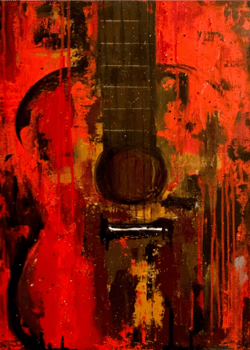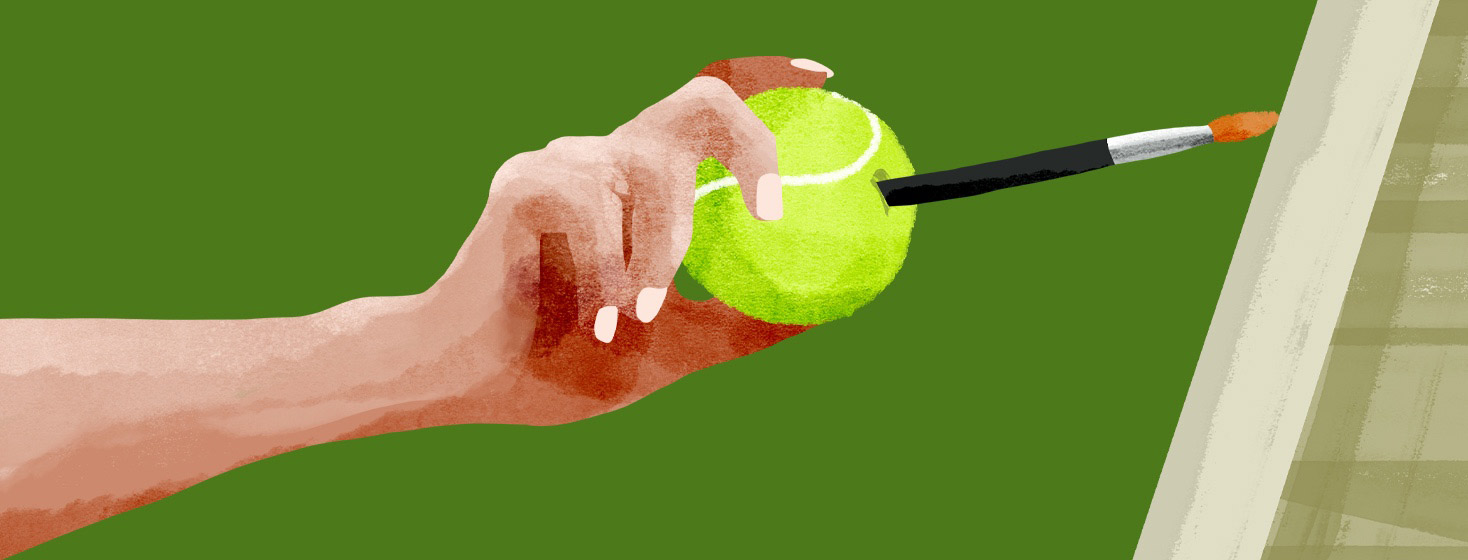How I Create: Through the Lens of a Visually Impaired Artist
I began painting in late 2017, shortly after experiencing a catastrophic episode of vision loss due to bilateral optic neuritis. Since then, my vision and physical capabilities have diminished quite a bit, but my passion for creating art remains strong.
Relapses and unexpected health complications require me to expand my creativity in ways that I would never have realized had I not experienced such significant challenges.
Featured Forum
View all responsesStep into a visually impaired artist's studio...
My favorite mediums include Acrylics, Watercolors, digital art, and Alcohol Ink. Each medium produces a substantially different result, and I love the flexibility within each medium.
Mediums. Methods. Styles.
Acrylics are forgiving and predictable to work with. Colors can be easily blended, and mistakes easily corrected.
Watercolors and alcohol inks are not as forgiving nor as predictable to work with, but the challenges that come while working with these mediums are worth it!
Some of my favorite pieces were created using alcohol inks. I’ve found that the results are nearly impossible to duplicate, which makes the finished pieces truly one-of-a-kind.
Inspiration is abundant
My portfolio includes a variety of styles like Realism, Abstract, Painterly, and Impressionism. I attribute my broad portfolio to the creativity and ingenuity required to create art despite my ever-changing visual and physical impairments. My emotions, memories, life experiences, bold colors, flowers, textures, music, and love inspire me.
Process. Tools. Ingenuity.
My creative process is methodical and thoughtful. Rarely ever do I begin a painting without a plan and rough sketch in mind.
Adapting my art studio to accommodate my vision loss
Every color of acrylic paint, alcohol ink, and watercolor in my studio has a corresponding swatch and color code to go with it. The color-coding system is something that I came up with to help me decipher lighter colors versus darker colors. I do not see colors like a sighted person, so my palette is limited. It's based on the colors that I can recall from memory.
The sketch
My rough sketches include a quick sketch of the painting, the specific color choices I plan to use, and where to place them. This process can be tedious, but it helps me further imagine what the finished painting will look like and allows me to paint in incremental steps if needed.
The colors
I am mindful of the colors I use in every painting, especially when I plan to transition colors or use multiple colors from various color families. Sometimes I will complete the back painting on a project, then sketch and paint my design on top, outlining and filling in with white paint. This helps decrease my eye strain. It also helps me visualize the painting using the truest colors because I’m painting over something white instead of a different color(s).
Assistive artistic devices
I use various tools, assistive devices, and technology during my painting process. Some of my favorite tools to use in my studio are paintbrushes, palette knives, rollers, sponges, heat guns, toothbrushes, and straws.
By far, my favorite tools to use when I paint are my hands and fingers! In fact, I encourage my collectors to run their hands over their artwork so that they can feel the texture of the paint and design.

All my guitar paintings are created strictly by hand. The guitars' bodies, along with their strings, are raised from the canvas and feel very much like an actual guitar.
Giving my paintbrushes a helping hand
When gripping a paintbrush is impossible, I utilize adaptive devices to help with my dexterity and grip. Conventional pencil grips and binder clips work well for smaller paintbrushes. I’ve even used fragmented pieces of Nerf Gun bullets to create a longer, more pliable brush handle surface.
Occasionally, I’ll create a small opening in a tennis ball and situate it so that my hand can grip the ball instead of the small brush handle. For larger brush handles, I utilize large binder clips to achieve an easier grip.
Technology is my friend!
Assistive technology has opened doors for me that are essential to creating. I've found these to be helpful:
*Color Identification apps play a vital role in my creative process.
I paint at my own pace
I utilize these apps to not only identify the colors of the paint I plan to use but to scan my artwork and identify the colors already on the canvas. This eliminates quite a bit of guesswork on my end, keeping my painting organized and cohesive.
Instead of feeling rushed to complete a painting in one session, color identification technology allows me to freely work on projects more at my leisure.
My home studio accommodations
To better accommodate my physical capabilities, my home studio is equipped with adjustable furniture, desks, and chairs.
In addition to the natural light in my studio, I utilize multiple lamps and adjustable lights to create the most optimal environment for my eyes.
The world of digital art
Apple’s Procreate software, along with Apple’s accessibility features, have allowed me to successfully explore the world of digital art as a visually impaired artist. The digital creation process is significantly different than putting paint on canvas, but I enjoy and appreciate their respective differences.
The beauty of creating art is that there is no right or wrong way to do it. My methods aren’t for everyone, but it works for me- and that’s what matters. The challenges I face as a visually impaired artist have shaped me into the creative I am today.
I don’t always know how I’m going to create, but I trust that I will find my way.

Join the conversation